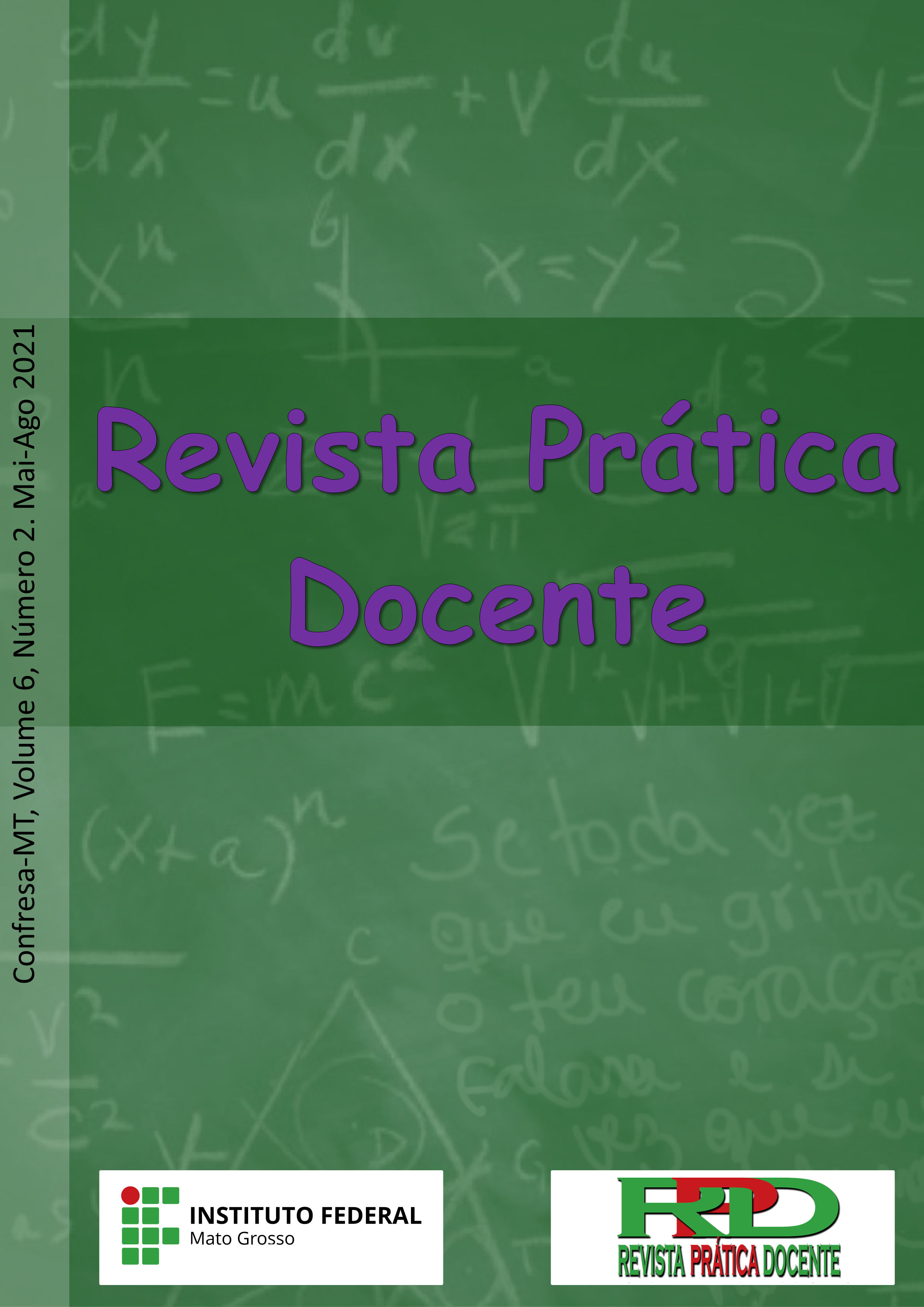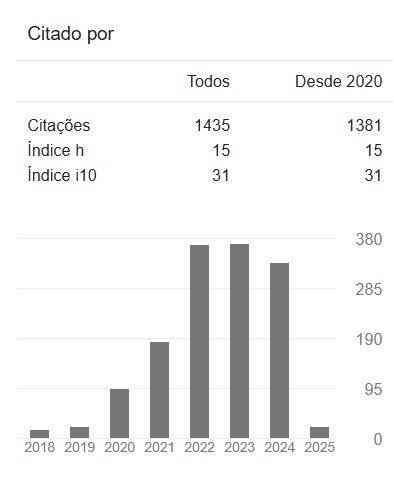SCIENTIFIC OUTREACH, PHYSICS TEACHING AND THE SCIENCE INVOLVED IN THE STUDY OF SATELLITES
DOI:
10.23926/RPD.2021.v6.n2.e037.id1054Keywords:
Scientific Education, History of Science, Space Physics, Technological DevelopmentAbstract
This article aims to analyze scientific dissemination activities that have been carried out on the study of satellites and related knowledge of aerospace physics and technology. The presentations made involved topics in the History of Science and Technology, to make the process of scientific development more understandable. These activities were planned based on the science and the history involved in the space race between the United States and the Soviet Union, in the context of the cold war, in the twentieth century, as well as the importance of the research conducted in the aerospace sector for the economic and social development of nations nowadays. In some presentations, data were collected through questionnaires designed to understand the educational impacts of the actions implemented. The results of the activities allow us to visualize some possibilities to encourage young students to study areas such as physics, mathematics, computation, astronomy and astronautics.
Downloads
Metrics
References
ALBAGLI, Sarita; CLINIO, Anne; RAYCHTOCK, Sabryna. Ciência Aberta: correntes interpretativas e tipos de ação. Liinc em Revista, v. 10, n. 2, p. 434-450, nov. 2014. Disponível em: http://revista.ibict.br/liinc/article/view/3593. Acesso em: 18 mar. 2021. DOI: https://doi.org/10.18617/liinc.v10i2.749
ALBAGLI, Sarita. Divulgação científica: informação científica para cidadania. Ciência da Informação, v. 25, n. 3, p. 396-404, set./dez. 1996. Disponível em: http://revista.ibict.br/ciinf/article/view/639. Acesso em: 19 mar. 2021.
CAIN, Fraser. How Many Satellites are in Space? Universe Today. 2013. Disponível em: https://www.universetoday.com/42198/how-many-satellites-in-space/. Acesso em: 17 mar. 2021.
CARLEIAL, Aydano Barreto. Uma Breve História da Conquista Espacial. Parcerias Estratégicas, v. 4, n. 7, 1999. Disponível em: http://seer.cgee.org.br/index.php/parcerias_estrategicas/article/view/78. Acesso em: 17 mar. 2021.
CHAIKIN, Andrew. A man on the Moon. Penguin, 2019.
COSTA, Bárbara Sigilião. Projeto de uma plataforma científica que simula as características e a operação de um pico-satélite para promover a educação em ciências e tecnologias aeroespaciais. Brasília, DF: Projeto de Graduação - UnB, 2013. Disponível em: https://bdm.unb.br/handle/10483/6043. Acesso em: 18 mar. 2021.
DIVINE, Robert Alexander. The Sputnik Challenge. New York, U.S.A.: Oxford University Press, 1993.
GARCIA, Mark. 60 years ago: The First Animal in Orbit. NASA. 2017. Disponível em: https://www.nasa.gov/feature/60-years-ago-the-first-animal-in-orbit. Acesso em: 18 mar. 2021.
GARCIA, Rafael. 7% dos brasileiros afirmam que Terra é plana, diz pesquisa. 15 de julho de 2019. Disponível em: https://gauchazh.clicrbs.com.br/tecnologia/noticia/2019/07/7-dos-brasileiros-afirmam-que-terra-e-plana-diz-pesquisa-cjy4n2vac01s901njeelvoimp.html. Acesso em: 20 mar. 2021.
GOMES, Emerson Ferreira; PIASSI, Luís Paulo de Carvalho. Corrida Espacial, Mídia e Rock n’Roll: A Exploração Espacial em seu Contexto Midiático e sua Representação na Cultura Pop. Resumos do XXXVII Congresso Brasileiro de Ciências da Comunicação- Intercom, Foz do Iguaçu, PR. 2014. Disponível em: http://www.intercom.org.br/sis/2014/resumos/R9-2276-1.pdf. Acesso em: 18 mar. 2021.
HARARI, Yuval Noah. 21 lições para o século 21. São Paulo: Companhia das Letras, 2018.
HOWELL, Elizabeth. What is a Satellite? Space. 2017. Disponível em: https://www.space.com/24839-satellites.html. Acesso em 3 jan. 2021.
LAVANDER, Andrew. How many satellites are orbiting the Earth in 2020? Pixalytics, 27 de maio de 2020. Disponível em: https://www.pixalytics.com/satellites-orbiting-earth-2020/. Acesso em: 19 mar. 2021.
MAGALHÃES, Cíntia; SILVA, Evanilda da; GONÇALVES, Carolina. A interface entre alfabetização científica e divulgação científica. Revista Areté - Revista Amazônica de Ensino de Ciências, v. 5, n. 9, p. 14-28, 2017. Disponível em http://periodicos.uea.edu.br/index.php/arete/article/view/44. Acesso em: 19 mar. 2021.
MAY, Sandra. Who Was Alan Shepard? NASA. 2017. Disponível em: https://www.nasa.gov/audience/forstudents/k-4/stories/nasa-knows/who-was-alan-shepard-k4.html. Acesso: 17 mar. 2021.
MOREIRA, Marco Antonio. Aprendizagem Significativa: a teoria e textos complementares. São Paulo: Livraria da Física, 2011.
NEAL, Homer A.; SMITH, Tobin L.; MCCORMICK, Jennifer B. Beyond Sputnik: U.S. Science Policy in the Twenty-First Century. Ann Arbor, U.S.A.: University of Michigan, 2008. DOI: https://doi.org/10.3998/mpub.22958
OLIVEIRA, Graziele Lopes de. Panorama das pesquisas sobre divulgação científica / popularização da ciência no Brasil. Rio Grande (RS): Dissertação de Mestrado (Universidade Federal do Rio Grande), 2015. Disponível em: <https://sistemas.furg.br/sistemas/sab/arquivos/bdtd/0000010810.pdf>. Acesso em: 21 mai. 2021.
PESSOA FILHO, José Bezerra. O contexto histórico da corrida espacial. 1ª Jornada Espacial, São José dos Campos, SP, 2005. Disponível em: https://educacaoespacial.files.wordpress.com/2010/10/ijespacial_03_corrida_espacial_p1.pdf. Acesso em: 16 mar. 2021.
REIS, Norma Teresinha Oliveira et al. Análise da dinâmica de rotação de um satélite artificial: uma oficina pedagógica em educação espacial. Revista Brasileira de Ensino de Física, v. 30, n. 1, 1401, 2008. Disponível em http://dx.doi.org/10.1590/S1806-11172008000100011. Acesso: 18 mar. 2021. DOI: https://doi.org/10.1590/S0102-47442008000100011
SANTOS, Wildson Luiz Pereira dos; MORTIMER, Eduardo Fleury. Uma análise de pressupostos teóricos da abordagem C-T-S (Ciência-tecnologia-Sociedade) no contexto da educação brasileira. Revista Ensaio, v. 2, n. 2, p.110-132, 2002. Disponível em: https://doi.org/10.1590/1983-21172000020202. Acesso em: 19 mar. 2021. DOI: https://doi.org/10.1590/1983-21172000020202
SILVA, Luciano Fernandes; CARVALHO, Luiz Marcelo de. Professores de física em formação inicial: o ensino de física, a abordagem CTS e os temas controversos. Investigações em Ensino de Ciências, v. 14, n. 1, p. 135-148, 2009. Disponível em: https://www.if.ufrgs.br/cref/ojs/index.php/ienci/article/view/414/246. Acesso em: 19 mar. 2021.
THE ROYAL SOCIETY. Final report - Science as an open enterprise. 21 june 2012. Disponível em: https://royalsociety.org/topics-policy/projects/science-public-enterprise/Report/. Acesso em: 15 mar. 2021.
WILLIAMS, David R. Luna 1. NASA. 2019. Disponível em: https://nssdc.gsfc.nasa.gov/nmc/spacecraft/display.action?id=1959-012A. Acesso em: 18 mar. 2021.
WINTER, Othon Cabo; PRADO; Antonio Fernando Bertachini de Almeida. A Conquista do Espaço: do Sputnik à Missão Centenário. São Paulo: Editora Livraria da Física, 2007.
Downloads
Published
How to Cite
Issue
Section
License
Copyright (c) 2023 A Revista Prática Docente tem o direito de primeira publicação

This work is licensed under a Creative Commons Attribution-NonCommercial 4.0 International License.
Authors who publish in this journal agree to the following terms:
- Authors retain the copyright and grant the journal the right of first publication, with the paper simultaneously licensed under the Licença Creative Commons Attribution allows the sharing of the work with acknowledgment of authorship and initial publication in this journal.
- Authors are authorized to take additional contracts separately, for non-exclusive distribution of the version of the work published in this journal (e.g. publish in institutional repository or as a book chapter), with acknowledgment of authorship and initial publication in this journal.











